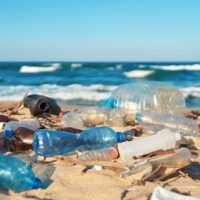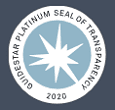Solution: Operational and Technical Measures
Operational and technical measures could be employed relatively easily and cost-effectively to further reduce emissions.
Operational
– Slow Steaming: This is traveling at 20 knots or below rather than 24 or 25 knots. It is an operational measure that can be easily implemented without retrofits and can reap immediate rewards, often at a cost saving.
– Improved Voyage Planning: The efficiency of a voyage can be improved through selecting optimal routes based on weather conditions and currents to reduce energy consumption. Just-in-time arrival takes into account tides, congestion and arrival windows to avoid long wait times at the port, and thus reducing idling emissions. Optimization of ballast and trim attempts to find the best operating trim and avoids carrying unnecessary ballast, thus reducing the resistance of a vessel and therefore its emissions.
– Propeller, Hull and Propulsion System Maintenance: Upgrading, polishing, cleaning and regular maintenance of the components of a ship increase opperating efficiency and thus reduce emissions.
Technical
– Paints and Hull Coatings: Hull fouling and roughness may increase resistence through the water between 6 and 80 percent. Special paints and hull and propeller coating can prevent fouling and may reduce fuel us by five percent, while simultaneously reducing maintenance requirements. This practice could likely pay for itself within a year.
– Efficient Propellers: More efficient propellers could likely increase fule consumption by as much as 15 percent.
– Automatic Controls: upgrading the automatic systems, such as temperature controls, lights, and speed control can reduce the need for auxilary power by about 10 percent.
-Waste Heat and Engine Energy Recovery: Waste heat recovery systems use waste heat from the exhaust to either generate electricity or help propel the vessel. These systems if utilized can increase engine power by 9 to 11 percent.
– The use of “cold ironing” at ports: This is where ships shut off their diesel engines and are connected to shore-based power for their electrical needs reduces direct emissions in port areas and allow energy needs to be met by low-emission sources, such as wind or solar energy.
– Improved hull design: This can achieve reductions in emissions through reduced fuel consumption. A bulbous bow can increase a ship’s fuel efficiency by reducing its wavemaking resistance.
– Stern flap: A small plate that extends behind a ship’s transom, lengthening the bottom surface of the hull, can reduce a ship’s resistance and thus increase fuel efficiency by a few to several percent.
– Sail or kite-assisted propulsion: This can provide zero-emissions wind power and plans are already underway to employ such technologies on some new and existing cargo vessels.
– Air Cavity System (ACS): This technology developed by DK group says it can reduce the shipping industry’s emissions by up to 15 percent per year.



